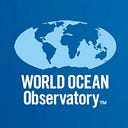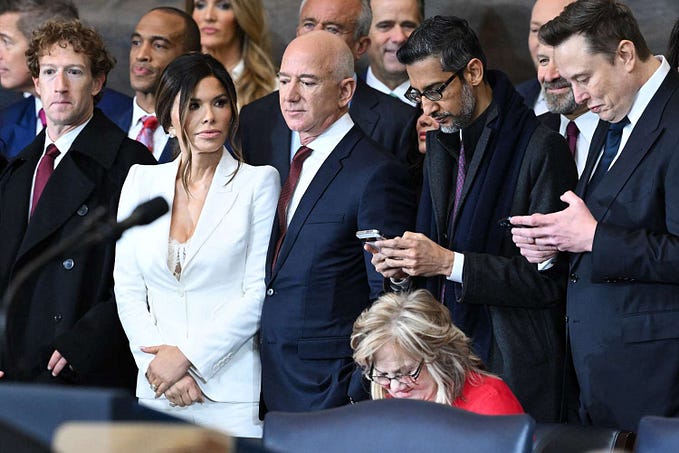Howard Hughes and the Strange Legal History of the Ocean Floor (part two)
originally published May 9, 2022 by Timothy G. Nelson
for The Maritime Executive

[This article is the second part of a two-part series on the legal history of deep-sea mining. The first part may be found here.]
During the 1970s, a U.N. conference, “UNCLOS III,” was commissioned to draft a comprehensive Law of the Sea Convention, (“LOSC”), to regulate, among other things, the the deep seabed. Though initially, this had White House support, things changed in 1977, when the treaty text took a leftward turn — providing for seabed mining to be governed by a central U.N.-affiliated “Authority,” whose “Enterprise” would also engage in mining itself, with profits distributed to developing states, on the basis that the seabed was the “common heritage of mankind.” Members of Congress reacted by sponsoring legislation to regulate seabed mining unilaterally, via U.S. government licensing.
In 1979, this legislation was being actively considered. In that same year, yet another treaty text, from another UN body — the United Nations Office of Outer Space Affairs — sent critics of the draft LOSC into overdrive. Titled the “Moon Agreement,” this too described both the Moon and all celestial bodies as “common heritage of mankind,” and envisaged a system whereby an international regulator would license and supervise the exploitation of outer space. One U.S. critic (future Secretary of State Alexander Haig) complained that the treaty “would doom any private investment directed at space resource exploration.”
It was clear that attitudes towards the “common heritage of mankind” formula had changed. In 1970, when the Nixon administration declared the deep seabed to be the “common heritage of mankind,” the phrase was little more than a political bromide. By decade’s end, the phrase was viewed as socialistic.
Not that the Group of 77 was blind to market forces: Part XI of LOSC (both in its draft and final versions) included a carefully-crafted set of production ceilings for the minerals expected to be extracted from the deep seabed (namely, nickel, manganese, copper and cobalt). This was apparently intended to protect developing countries from the adverse price effects (to their economies) from such minerals becoming more abundant.
It thus was not surprising that Congress enacted the “Deep Seabed Hardbed Mineral Resources Act” of 1980 to facilitate U.S. commercial mining on the ocean floor without U.N. or international approval, based on licenses issued by a U.S. regulator. In 1982, President Reagan issued a national security directive stating that he would only support a treaty that “will not deter development of any deep seabed mineral resources to meet national and world demand” and “[would] give the United States a decision-making role in the deep seabed regime that fairly reflects and effectively protects its political and economic interests and financial contributions.” Later that year, the United States signed a series of bilateral treaties with its major trading partners that provided for mutual recognition of their mining legislation and rights.
In December 1982, the final LOSC text was presented for signature at the ceremonial final meeting of UNCLOS III in Montego Bay. Despite some modifications, Part XI of the text retained many controversial features from the 1977 draft– including the strong central Seabed Authority, its operating “Enterprise,” its profit redistribution rules, and mandatory “technology transfer” provisions obligating Western operators to share their seabed mining technology with the Enterprise and developing nations. Many countries, including Western states, signed LOSC, but the United States did not.
For some, the U.S. refusal to sign LOSC was a disappointment, since LOSC had many features that were beneficial to U.S. maritime, naval and commercial interests. Despite discomfort with Part XI, non-adherence came at a potentially heavy price, since it put U.S. mining interests outside the treaty’s protection. As the former U.S. chief negotiator, Elliot Richardson, pointed out in 1983:
Domestic United States law cannot confer on anyone a generally recognized legal right to exploit a defined area of the seabed. But without such a right good for at least twenty years, no rational investor will gamble $1.5 billion on a deep seabed mining project. It will not suffice for seabed mining claims to be recognized only by a handful of like-minded countries. And even the seabed mining States concede that international law would not require non-members of the reciprocal regime to respect it.
As to Mr. Richardson’s estimate of a $1.5 billion dollar cost of seabed mining, it may have been conservative. The supposedly original seabed drill ship, Hughes Glomar Explorer, cost over $800 million, if not more, in 1970s dollars.

During the 1980s and early 1990s, the United States’ “holdout” status was immaterial because the LOSC still had not been ratified by enough countries. But on November 16, 1993, Guyana became the sixtieth state to ratify, meaning LOSC would take effect on November 16, 1994. The Seabed Authority, and all of its associated treaty machinery, was to spring into life.
Having failed to stop the LOSC, and the Seabed Authority, from coming into existence, the U.S. and other Western nations hurriedly negotiated a reconciliation package to ameliorate the more troublesome features of Part XI and the Seabed Authority structure, and thus enable the U.S. to enter the LOSC. In June 1994, the U.S. and other countries endorsed an “Agreement on Implementation” of Part XI, creating a more market-friendly regime for the seabed. This reduced the license application fee, reduced funding for the so-called “Enterprise,” abolished production ceiling rules, made seabed activity subject to GATT rules, and dropped mandatory technology transfer. It further provided for voting on the Seabed Authority to be done in groups, with the U.S. virtually guaranteed a seat on such groups — and placed all key financial decisions in the hands of a Finance Committee, in which the largest donors would automatically be members and decisions would be based on consensus.
The Clinton Administration signed both the “Implementation Agreement” and the LOSC in mid-1994, in the hope that the Senate would soon ratify it. This never occurred, however. Despite bipartisan support for LOSC (including from the second Bush administration), it has continued to draw enough criticism to make a ratification vote nonviable. In 2012, for example, over 33 Senators indicated they would oppose ratification, citing concerns over the Seabed Authority’s powers, as well as other objections to the LOSC.
Yet the LOSC exists, and since November 1994, the Seabed Authority has been the international regulator of the deep seabed. Based in Montego Bay, and with all of the trappings of U.N. bureaucracy — an “Assembly,” a “Council” and its own Secretariat — the Seabed Authority has granted various licenses to explore for polymetallic nodules, cobalt-rich ferromanganese, polymetallic sulfides. Most of these licenses have centered in the zone of the Pacific known as the “Clarion-Clipperton Zone,” just southwest of Hawaii.
The Seabed Authority has yet to grant actual mineral exploitation licenses. Its “Mining Code” — rules to govern the actual extraction of seabed minerals — has been the subject of ongoing internal debate since 2018. Once finalized, however, the path will be open for mining licenses to issue.
Notably also, while some exploration contracts have gone to Western applicants (e.g., German and British operators), others have gone to applicants from or supported by Cuba, Russia and China (see https://isa.org.jm/exploration-contracts/polymetallic-nodules). U.S. players are conspicuously absent.
While the Seabed Authority’s work has largely escaped public attention, its work remains important, not just because of the intrinsic value of the minerals in question, but also because the environmental significance of the deep seabed, and its ecosystems, has come to be far better understood. Critics have even accused the Seabed Authority of having an inherent conflict of responsibilities, in that it oversees both mining and environmental issues.
All of this, moreover, is occurring without active involvement of the U.S. — which, as a non-party to the LOSC, has no say in the Seabed Authority’s governance — all at a time when supply chain uncertainty and renewed international tensions have re-ignited concerns over access to natural resources.
What, then, became of the Hughes Glomar Explorer — the vessel whose 1974 expedition, for many, started the debate over deep seabed mining? Did it find manganese nodules on the sea floor, and if so, did it extract and sell them?
It turns out that the Hughes Glomar Explorer was, in reality, a front operation; not a drillship. It was purpose-built by the U.S. Central Intelligence Agency as part of “Project Azorian,” a covert, mission to find and raise a sunken Soviet nuclear submarine (the K-129) that had been lost in the North Pacific in 1969. The mission was partly successful, with portions of the submarine raised in August 1974 — following which, the Glomar Explorer was mothballed. The vast expense of the mission ( over $800 million) is still keenly debated among Cold War historians.
Despite its fanfare, therefore, the Hughes Glomar Explorer was not a pioneer of seabed mining. Although large scale seabed mining has not begun, policymakers, including in the United States, will soon be faced with some hard questions. The deep seabed covers literally two-thirds of the world’s surface. If robotic technology continues to accelerate, if commodity prices rise and if supply chain uncertainty intensifies, the issue of how and whether to mine the ocean floor — and how to deal with rival attempts to mine it — may become a topic of real and pressing concern.
Timothy G. Nelson is a partner at Skadden, Arps, Slate, Meagher & Flom LLP. The views expressed herein are solely those of the author and are not those of his firm or the firm’s clients.
Original post can be found here. Part one of the series can be found here.
WORLD OCEAN FORUM is dedicated to proposals for change in ocean policy and action worldwide, linking unexpected people with unexpected ideas and offering a knowledgeable outlet for research, opinion and storytelling.








